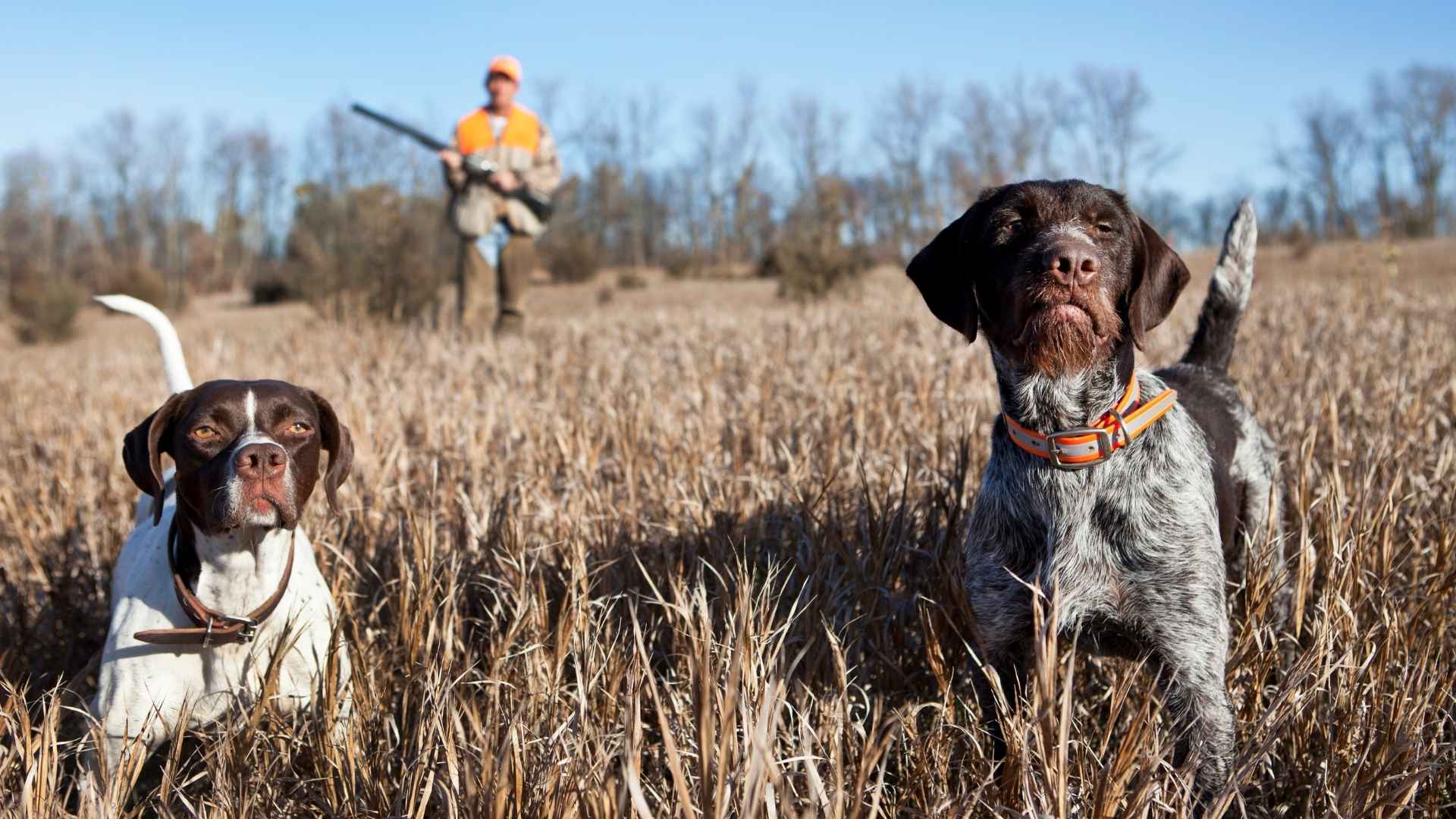The art of falconry is one of the oldest forms of hunting, where a skilled falconer teams up with a bird of prey—like a Harris hawk—to pursue game in the open field. But what many don’t realize is how important a well-trained dog can be in this partnership. The right breed helps locate and flush quarry, making it easier for the hawk to spot, fly, and catch its target.
Some hunting dogs, especially those with strong instincts and a natural drive to work, are a perfect fit for this kind of teamwork. They’re agile, alert, and responsive to both their handler and the bird above. Whether it’s tracking rabbits through thick brush or staying steady as a hawk circles overhead, these dogs play a vital role in the success of every outing.
Before choosing a dog for falconry, it’s essential to understand which breeds work best in the field and why. The following list highlights ten bird dogs known for their ability to work in sync with falcon hunters, offering reliability, stamina, and sharp instincts where it counts most.
Dog Breeds That Work Well With Falcon Hunters
1. Labrador Retriever
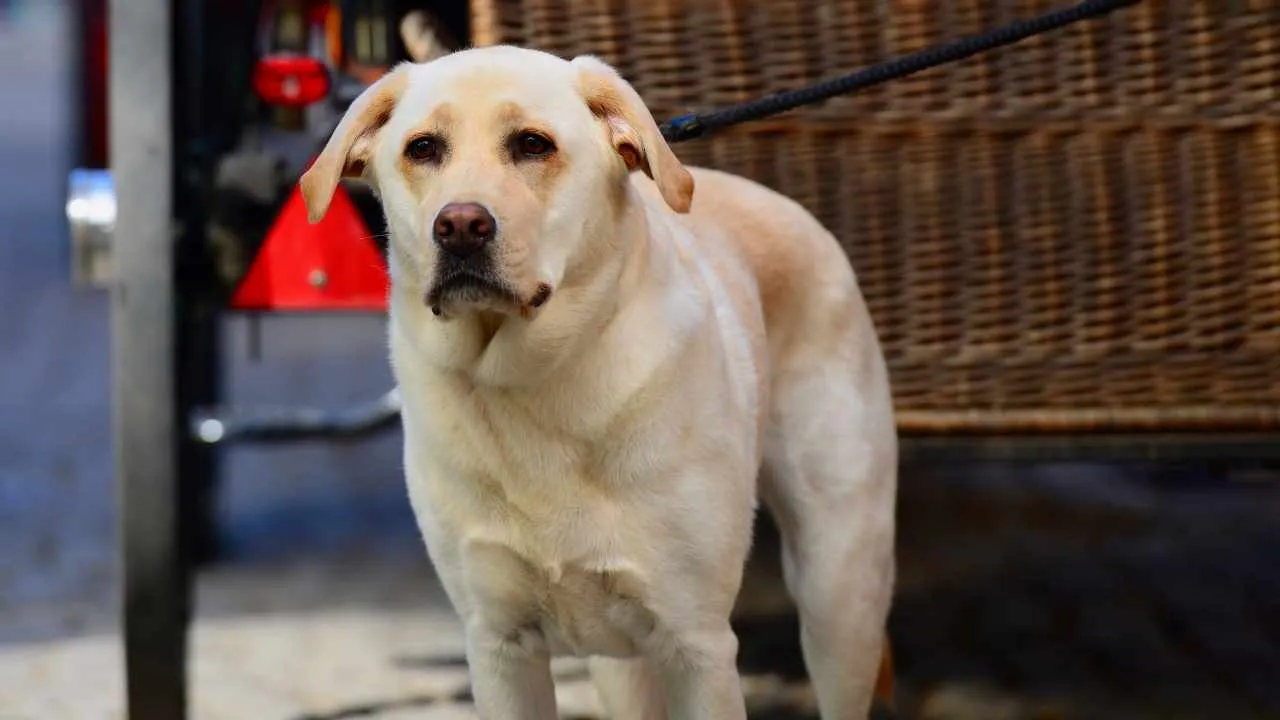
Type: Flusher
Labrador Retriever is one of the most popular dog breeds in America—and for good reason. Friendly, loyal, and eager to please, Labs are also natural hunting dogs. Originally from Newfoundland, they were bred to retrieve fish and birds, working closely with fishermen in cold waters.
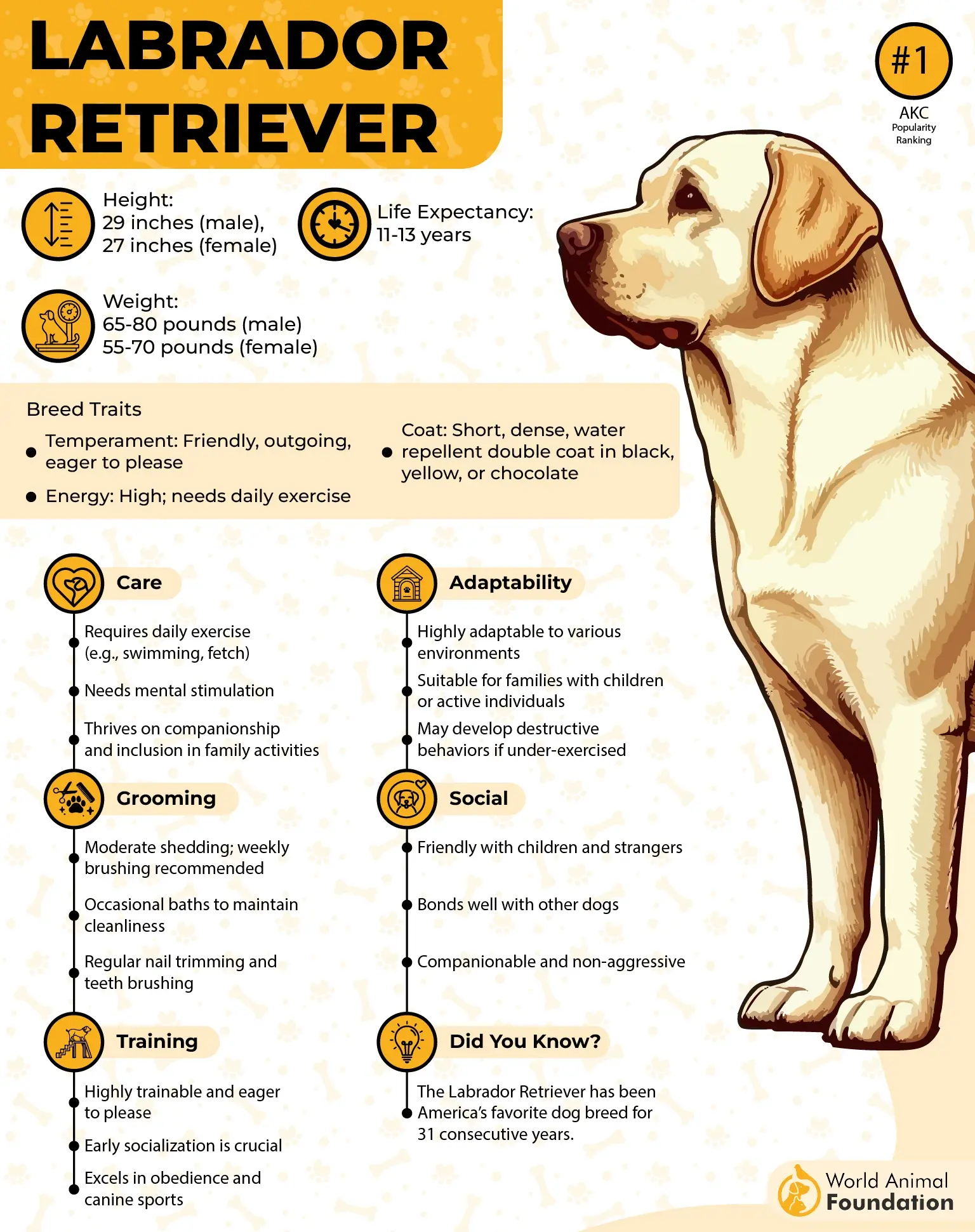
Labs are strong, athletic, and built for endurance. Their short, dense coats are water-resistant, and their webbed feet make them excellent swimmers. With their “otter tail” acting like a rudder, they move easily through water and thick brush.
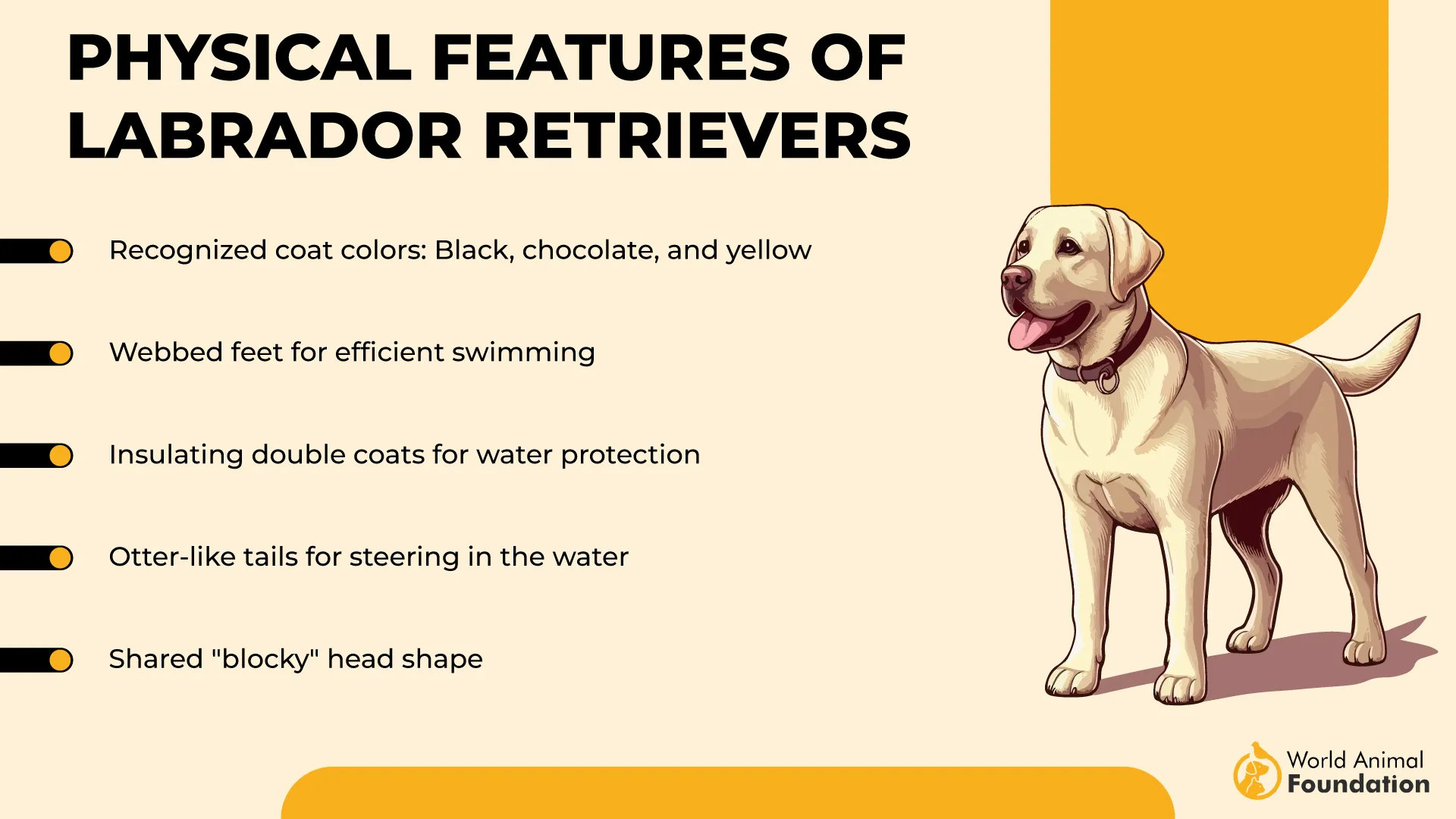
In falconry, Labs are great flushers. They hunt close to the falconer, stirring up quarry like ducks, pheasants, or rabbits for the hawk to catch. Their high energy and reliable temperament make them a solid choice for active hunters and falconers alike.
2. Nova Scotia Duck Tolling Retriever
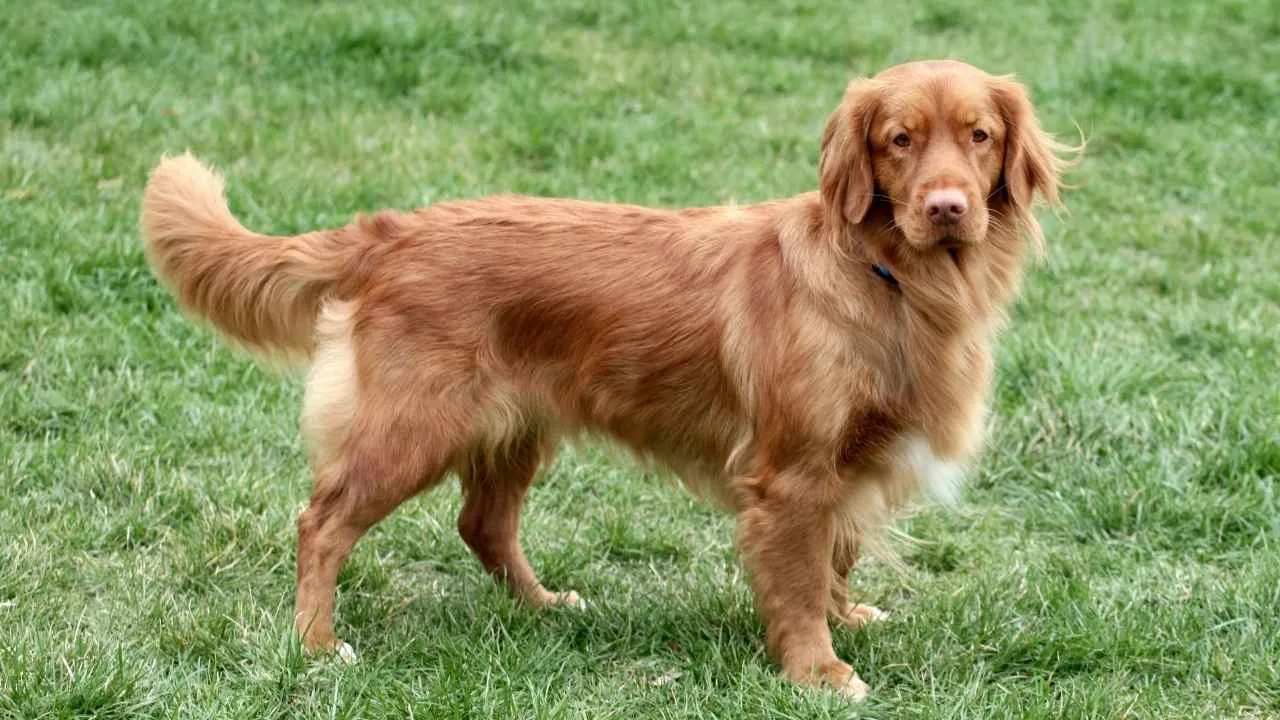
Type: Flusher & Retriever
Known for its unique hunting style, the Nova Scotia Duck Tolling Retriever—often called the “Toller”—is the smallest of the AKC’s retriever group. Originally bred in Nova Scotia, this medium-sized dog was designed to lure and retrieve ducks from cold waters.
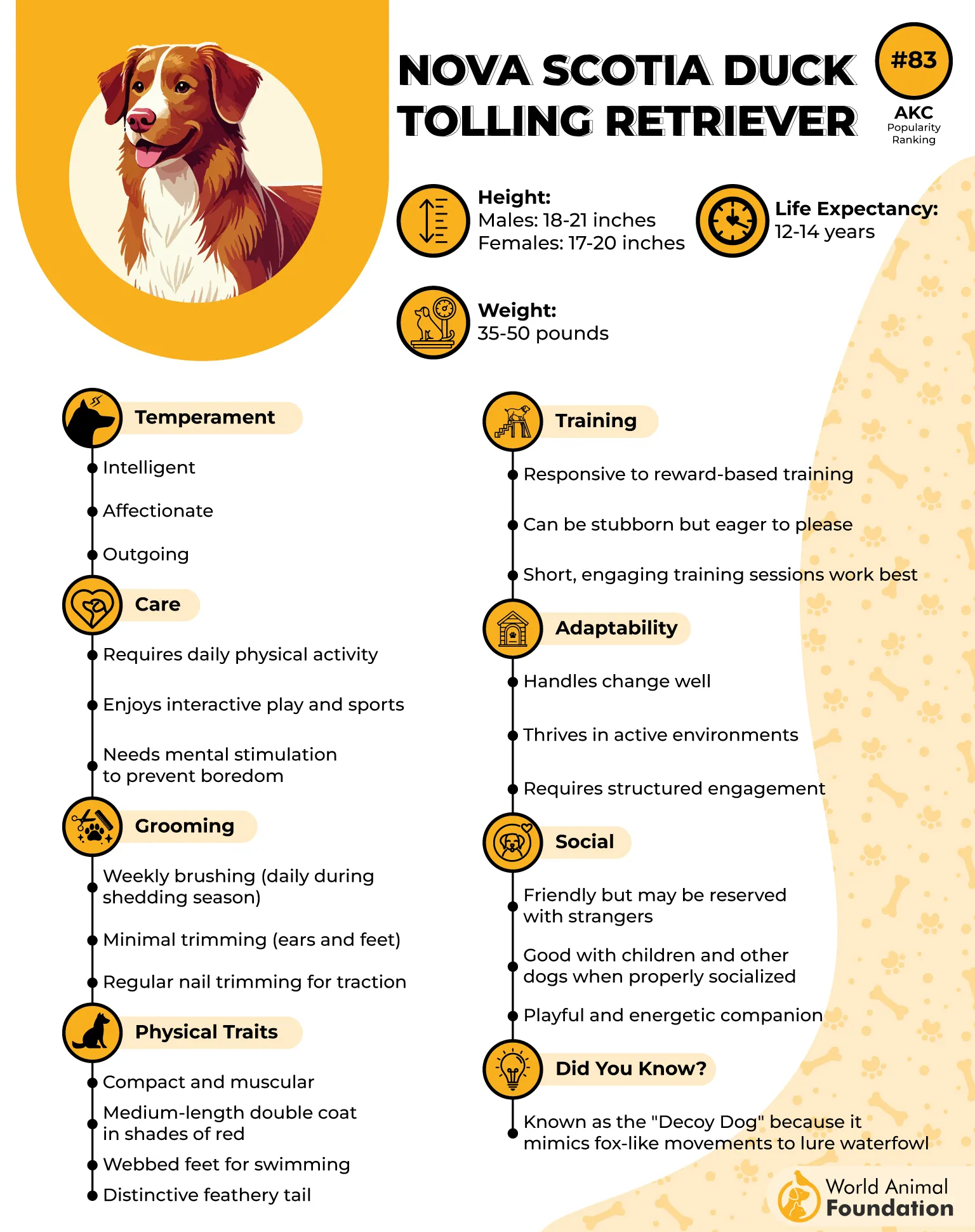
Tollers have a special technique: they play or splash near shorelines to attract the attention of wild birds. Curious ducks approach, giving hunters a chance to shoot, after which the Toller retrieves the downed game. This clever behavior earned them the nickname “Decoy Dog.”
Despite their size (typically 18–21 inches tall), they are strong, agile, and capable of handling ducks and even geese.
Their double coat is water-repellent and comes in shades of red with white markings. Webbed feet and boundless energy make them excellent swimmers and ideal partners for active falconers or hunters.
3. Golden Retriever
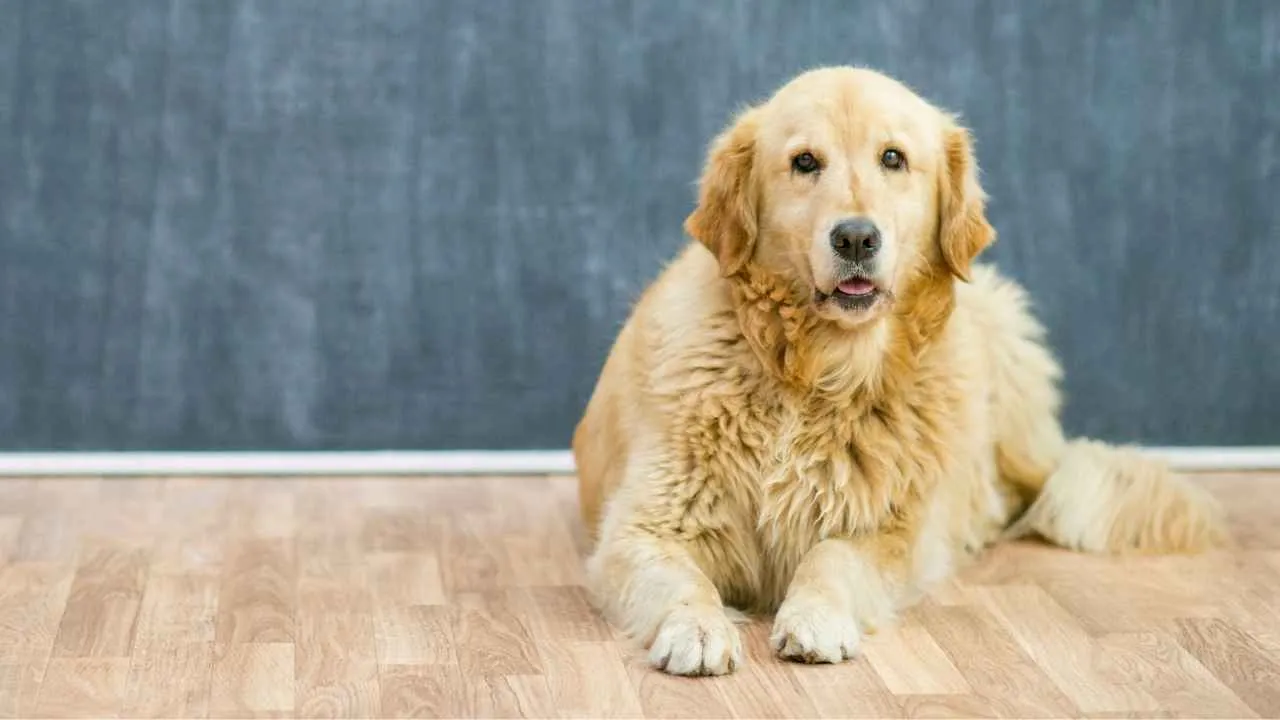
Type: Flusher & Retriever
Golden Retrievers are one of the most beloved dog breeds in the world. Though they’re often seen as therapy or guide dogs today, they were originally bred in 19th-century Scotland to retrieve game. Their long, water-resistant coats kept them warm in harsh terrain, and their athletic build made them ideal for hunting.

They’re quick learners and love having a task. Goldens are gentle, good with kids, and love being involved in family life. They can shift easily from a day of hunting to relaxing at home, though their thick double coat sheds heavily and needs regular grooming.
While friendly and laid back when not working, Goldens are hard-charging in the field. They’ll go after nearly anything they can get their jaws around and thrive when given a job to do. To get the best working dog, it’s important to choose a puppy from strong hunting bloodlines.
4. German Shorthaired Pointer
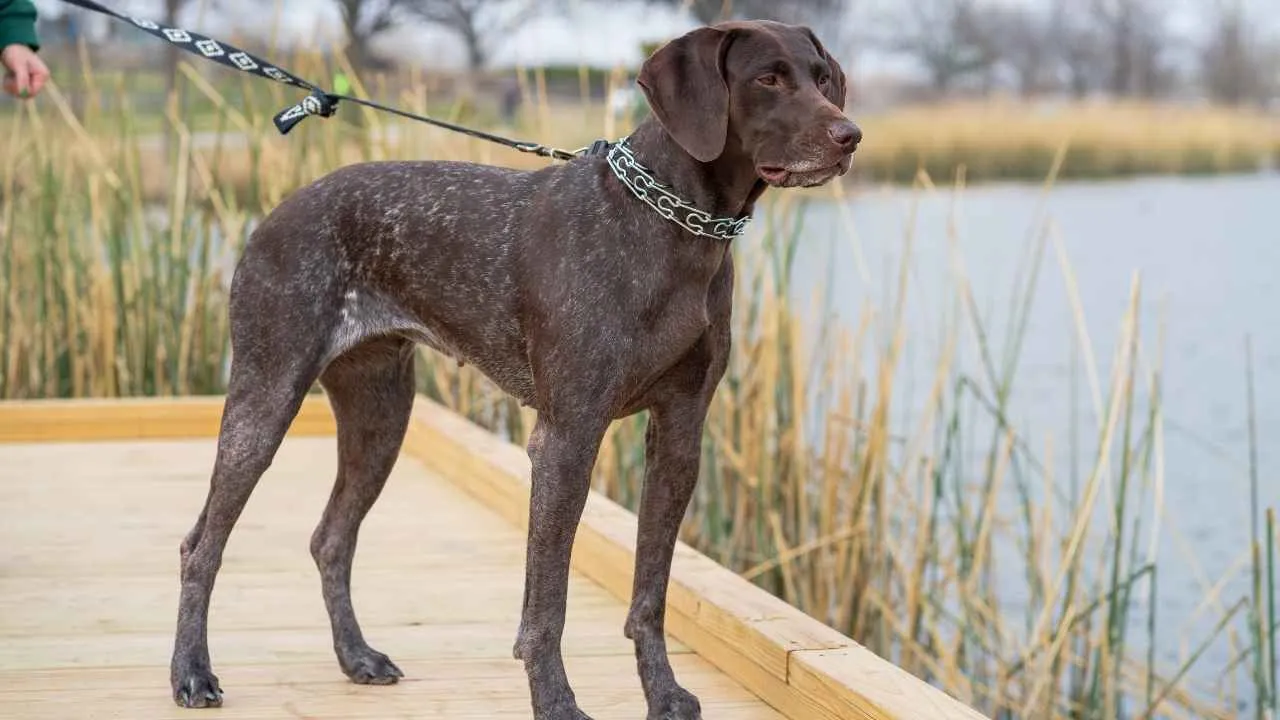
Type: Pointer & Retriever
Bred in 19th-century Germany, the German Shorthaired Pointer is a versatile sport dog known for its speed, agility, and determination. Originally developed for finding game on both land and water, GSPs remain a favorite for upland birds and long days in the field.
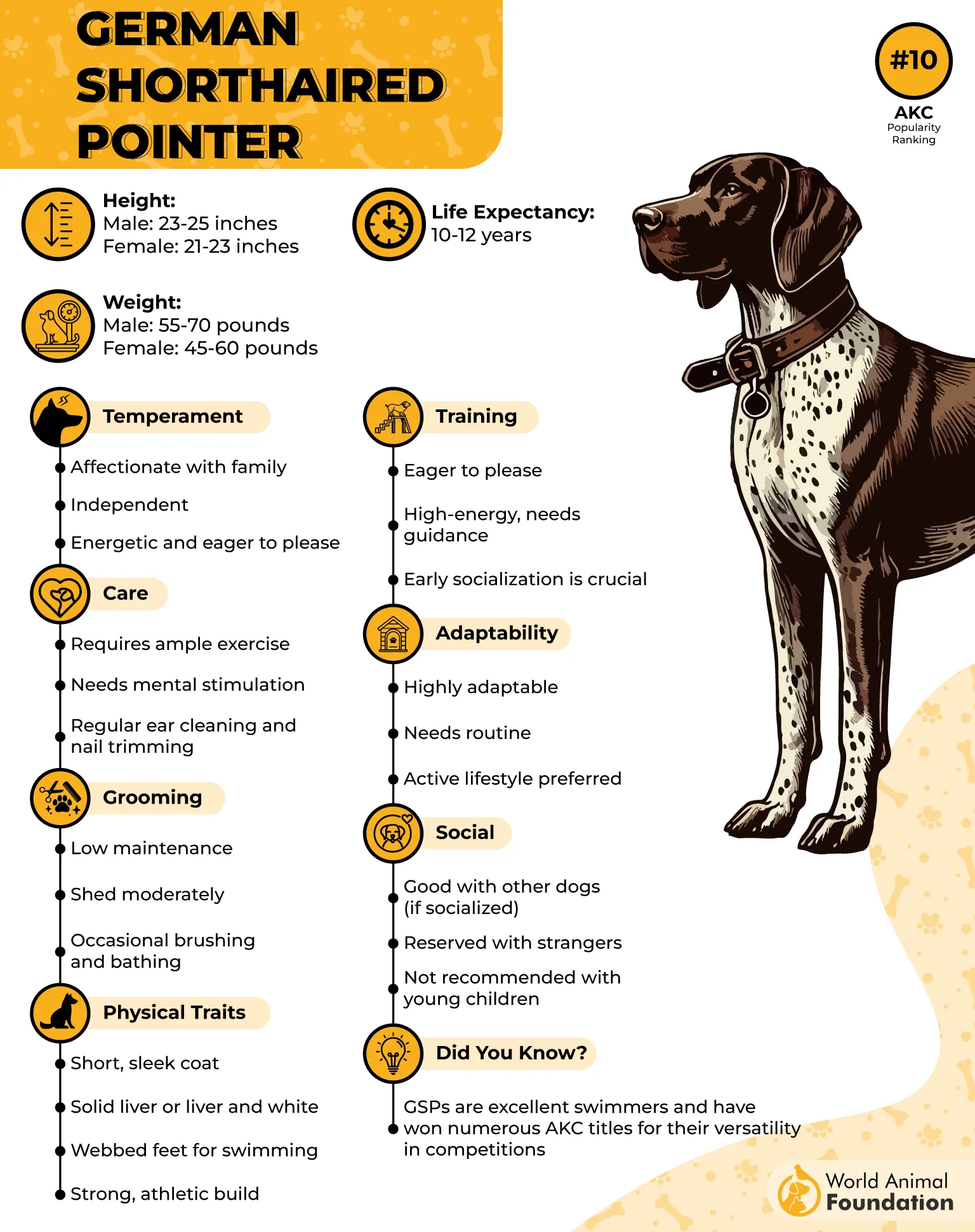
PetMD mentions that, unlike other bird dogs, GSPs point by stopping and standing still, with their nose aimed toward the scent. In this stance, they wait for a signal from their owner before moving in to flush the animal. This natural style makes them precise and highly effective in the field.
They have a sleek, water-repellent coat and a muscular build that lets them cover ground quickly and efficiently. With webbed feet and strong stamina, they perform equally well in streams and open terrain.
German Shorthaired Pointers are friendly, intelligent, and full of energy. While watching them work is a joy, they also do well at home, especially when raised from a young age and given regular exercise and structure.
5. Irish Setter

Type: Pointer
The Irish Setter is known for its striking red coat and graceful movement, but behind the beauty lies a skilled bird dog with a long span in hunting history. Originally developed in Ireland, this breed was created to locate and point upland game, including quail and turkeys, often working alongside two dogs for greater coverage in open terrain.
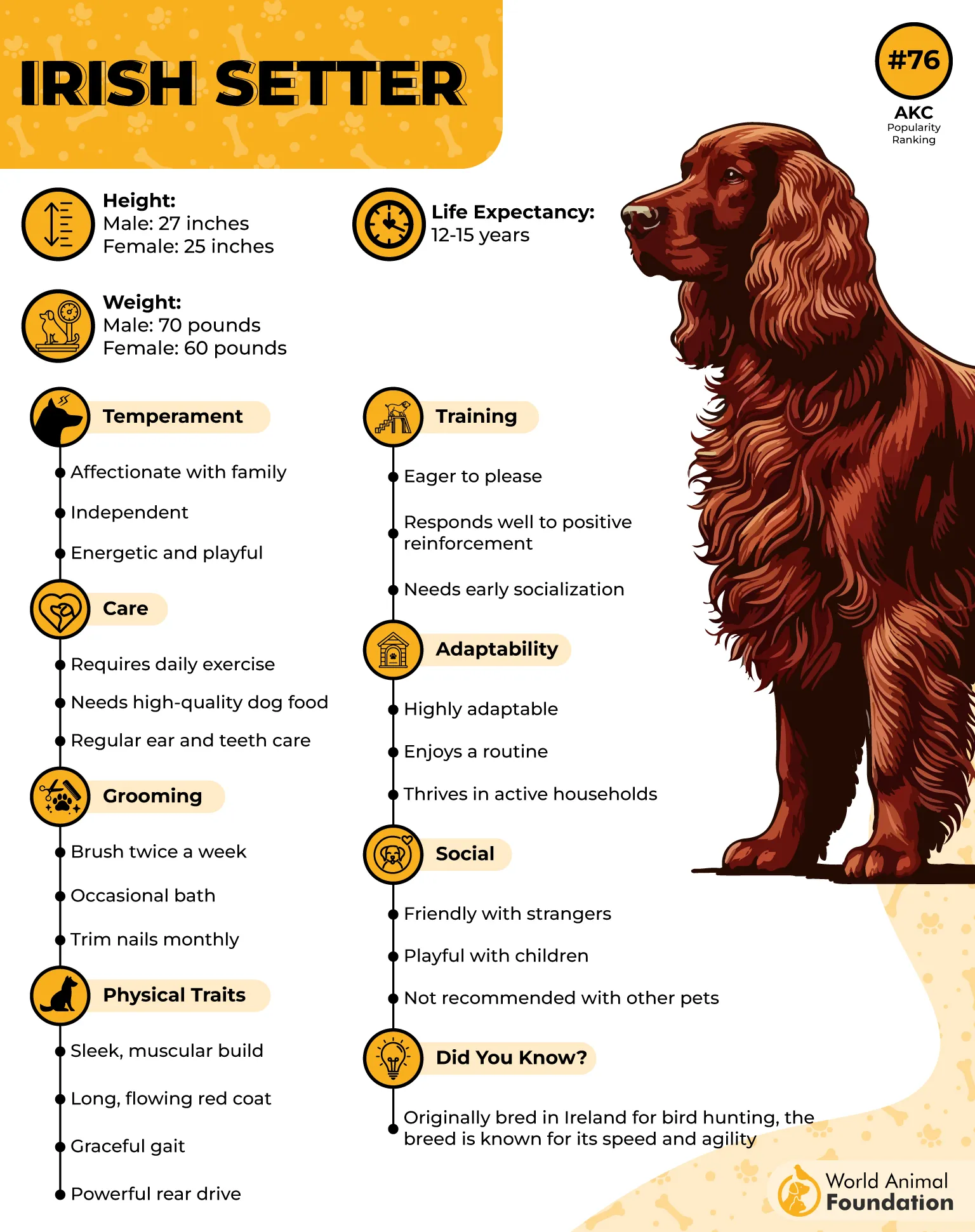
Bred for stamina and range, Irish Setters can sweep through wide fields where there’s so much game to find. Their keen nose and strong instinct to point made them valuable for locating birds before nets or guns were used.
With their smooth gait and eager disposition, they became a favorite among hunters seeking a reliable companion with both flair and function.
Though they’re generally quiet in the field, some individuals may exhibit occasional barking, especially when excited or tracking scent. They’re social, sensitive dogs that do best with patient handling and consistent training.
6. Boykin Spaniel
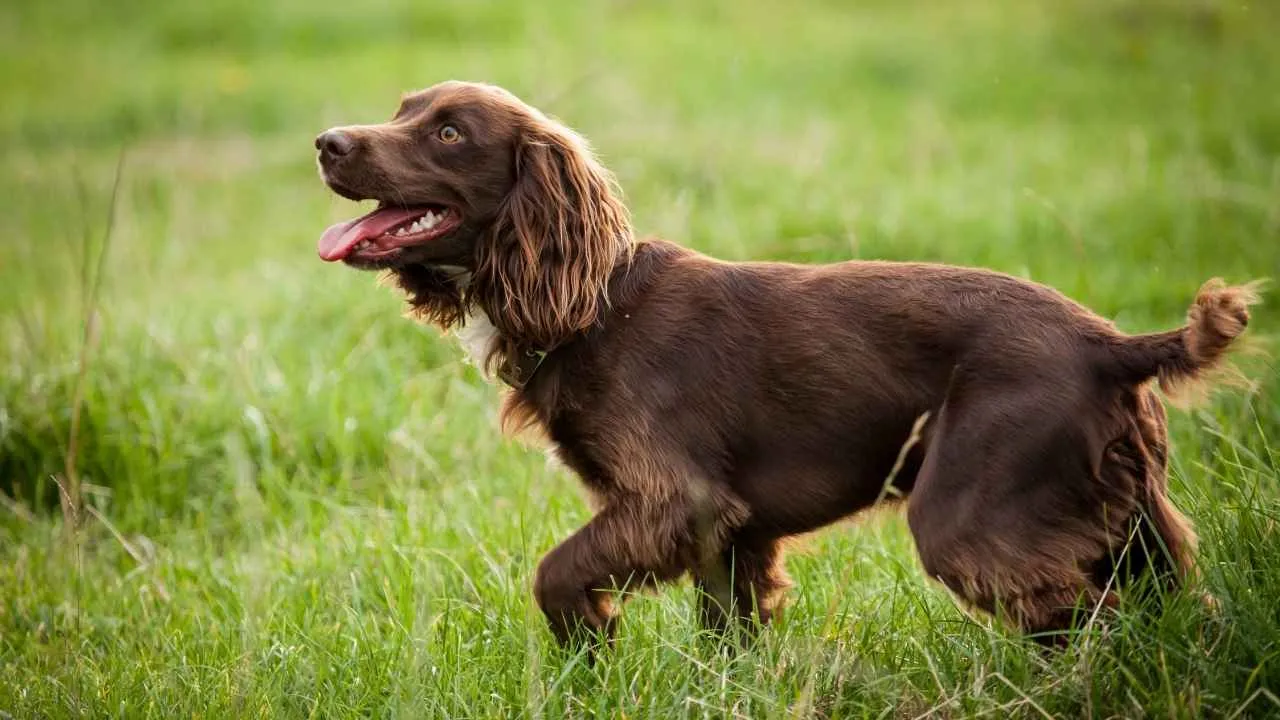
Type: Flusher & Retriever
AKC says that the Boykin Spaniel was developed in South Carolina in the early 1900s for hunting in swamps and lakes.
Bred to carry out both flushing and retrieving, they were used to pursue turkey, ducks, and other waterfowl during the season. Medium-sized and strong, they’re larger than Cocker Spaniels but smaller than Springers—compact enough for boat work and rugged enough for thick cover.

With webbed feet and athletic bodies, Boykins excel in the water. Their strong nose helps locate game even when it’s hiding under brush or near a tree. Though gentle at home, in the field they work with energy and effort, and won’t refuse a tough retrieve.
They are loyal companions who hunt with drive and focus. Whether flushing or retrieving, Boykins will not hesitate when it’s time to kill the retrieve, making them a prized asset in any hunting team, especially in watery terrain where birds might otherwise escape or be attacked by predators.
7. English Cocker Spaniel

Type: Flusher & Retriever
The English Cocker Spaniel is a compact and cheerful bird dog originally bred in England to hunt wild game, especially fox and woodcock. Despite their smaller size, these dogs have strong endurance, a keen nose, and a happy, eager nature that makes them a pleasure to work with in the field.
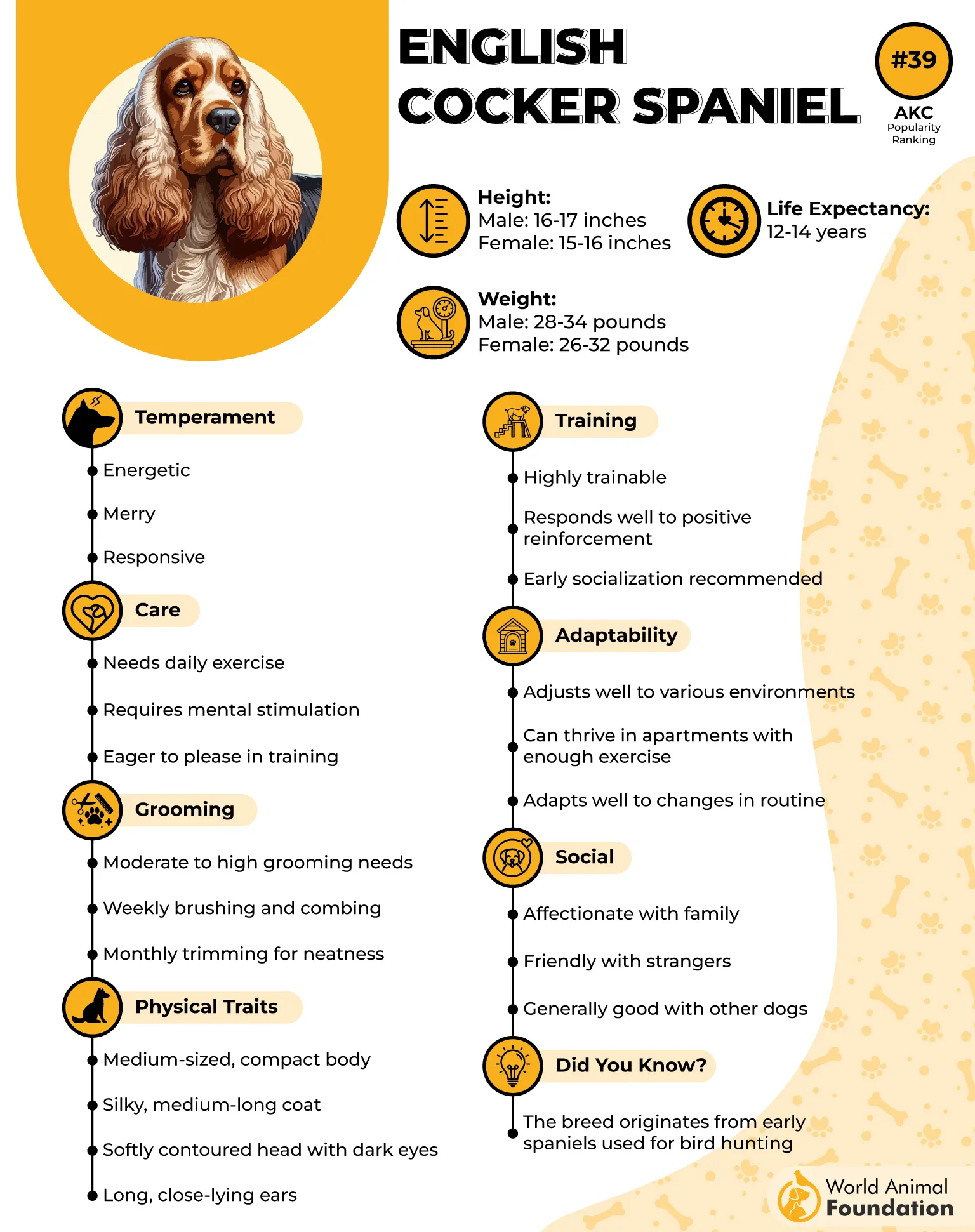
They are skilled flushers, moving through dense cover with precision and speed. Surprisingly, their energy and determination allow them to keep pace with larger species in both upland and wooded terrain. Their soft, silky coat and floppy ears give them their signature look, but beneath that charm is a tireless and focused worker.
Hunters appreciate the breed’s natural ability to stay in control, working closely with their handler while still confidently pushing through thickets to drive out hidden game.
English Cockers are known for their versatility, easily shifting from interested family companions to serious workers in the field. Thankfully, their friendly disposition and loyalty make them as enjoyable at home as they are effective in the field.
8. Vizsla
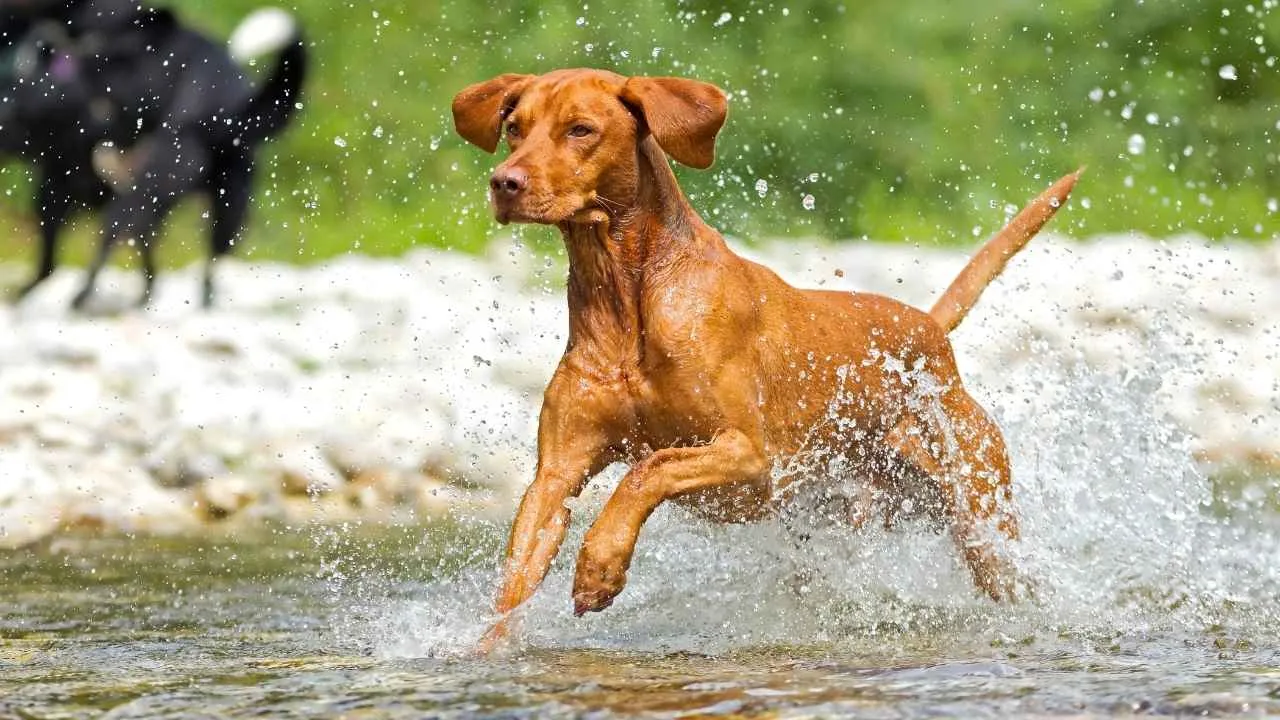
Type: Pointer & Retriever
The Vizsla is a sleek gun dog originally from Hungary, with roots tracing back to the 10th century. This ancient breed was developed by Hungarian nobility and warlords to be a fast, agile, and enduring hunting companion. Over time, the Vizsla’s traits helped shape several modern breeds, including the German Shorthaired Pointer and the Weimaraner.
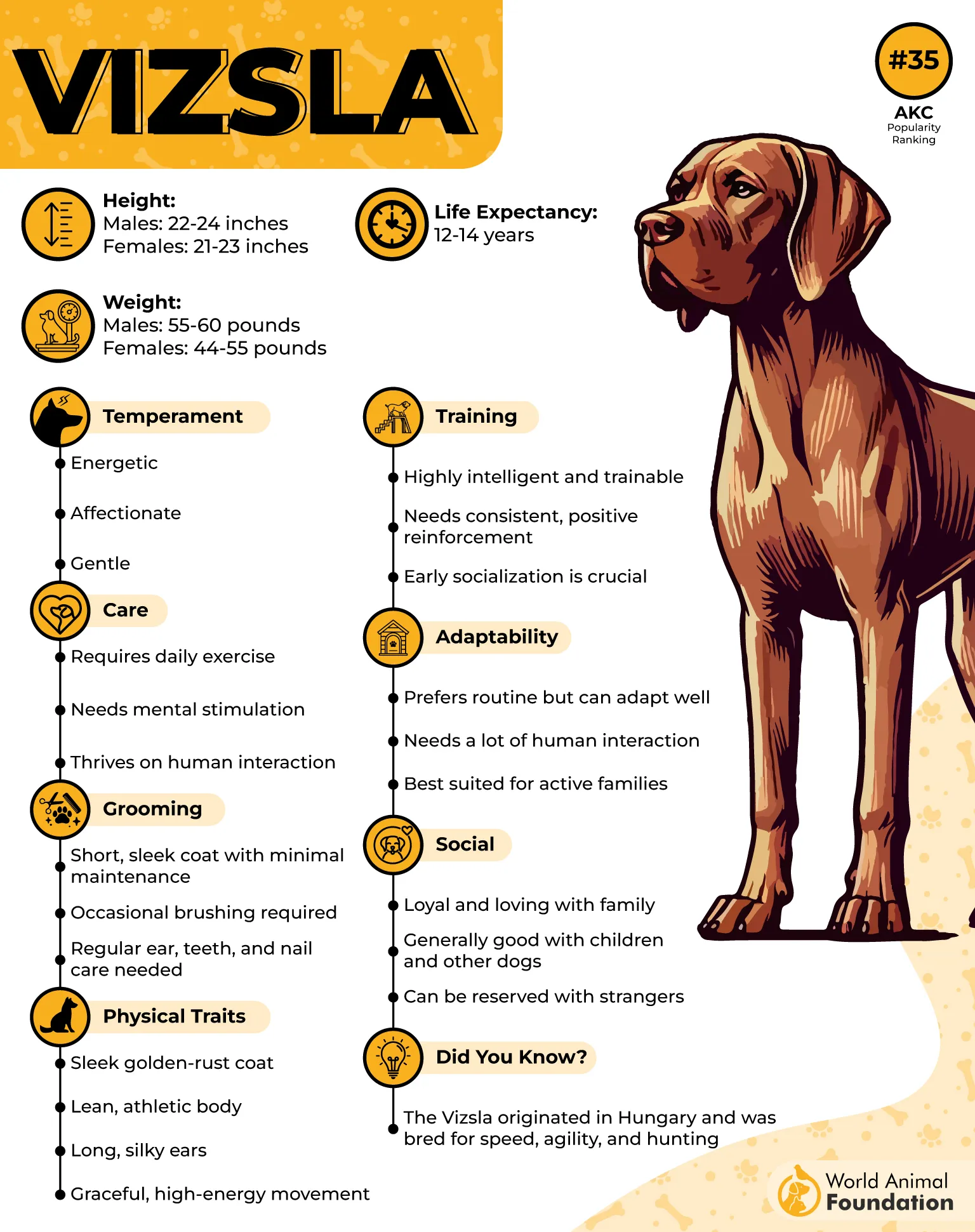
Built for long days in the field, the Vizsla combines strength and stamina with elegance and speed. They are among the fastest hunting dogs, reaching speeds up to 40 mph. With a natural ability to point and retrieve, they work well on land and in water, making them one of the most versatile hunting breeds.
Vizslas have a short, golden-rust coat that suits warm climates and requires minimal grooming. They form deep bonds with their families and thrive on close human connection, which makes them both reliable working dogs and affectionate companions.
9. English Springer Spaniel
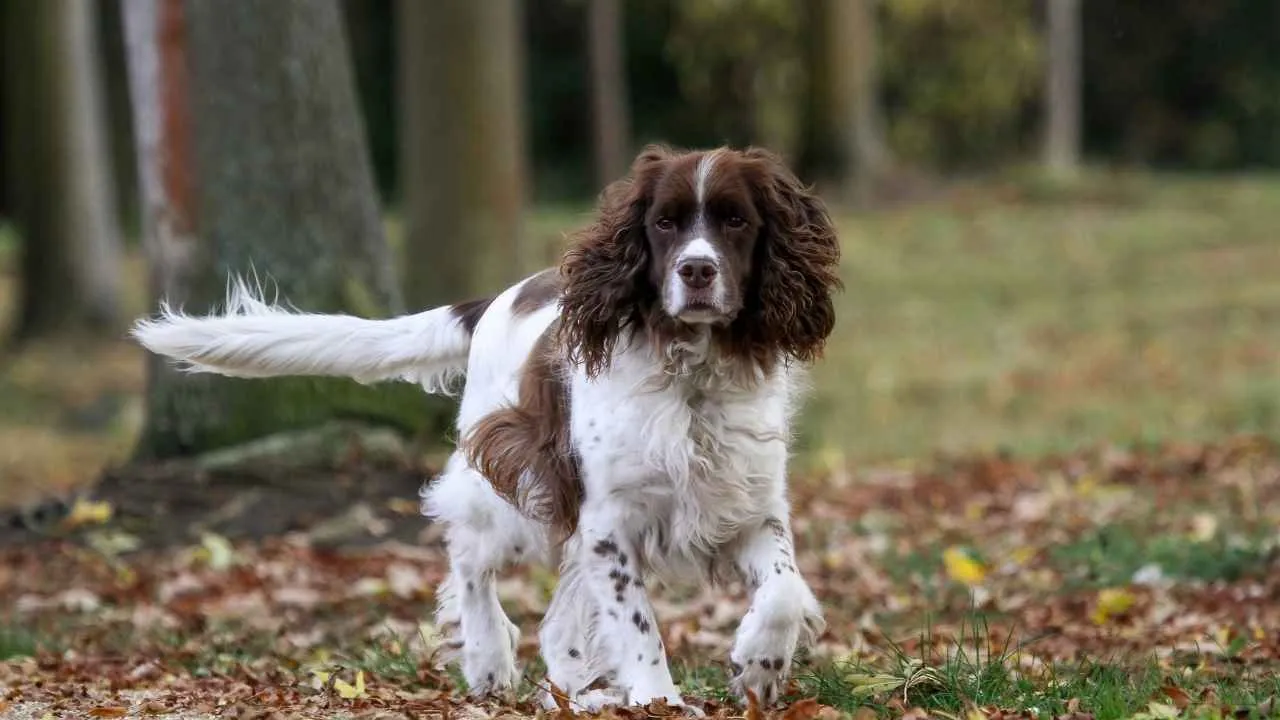
Type: Flusher & Retriever
The English Springer Spaniel is an energetic and loyal bird dog, bred for endurance, intelligence, and close cooperation with hunters. Originating in England in the late 1800s, the breed was developed to detect game birds, flush them from cover, and then retrieve the downed birds—often working in a zig-zag pattern to keep birds within range.
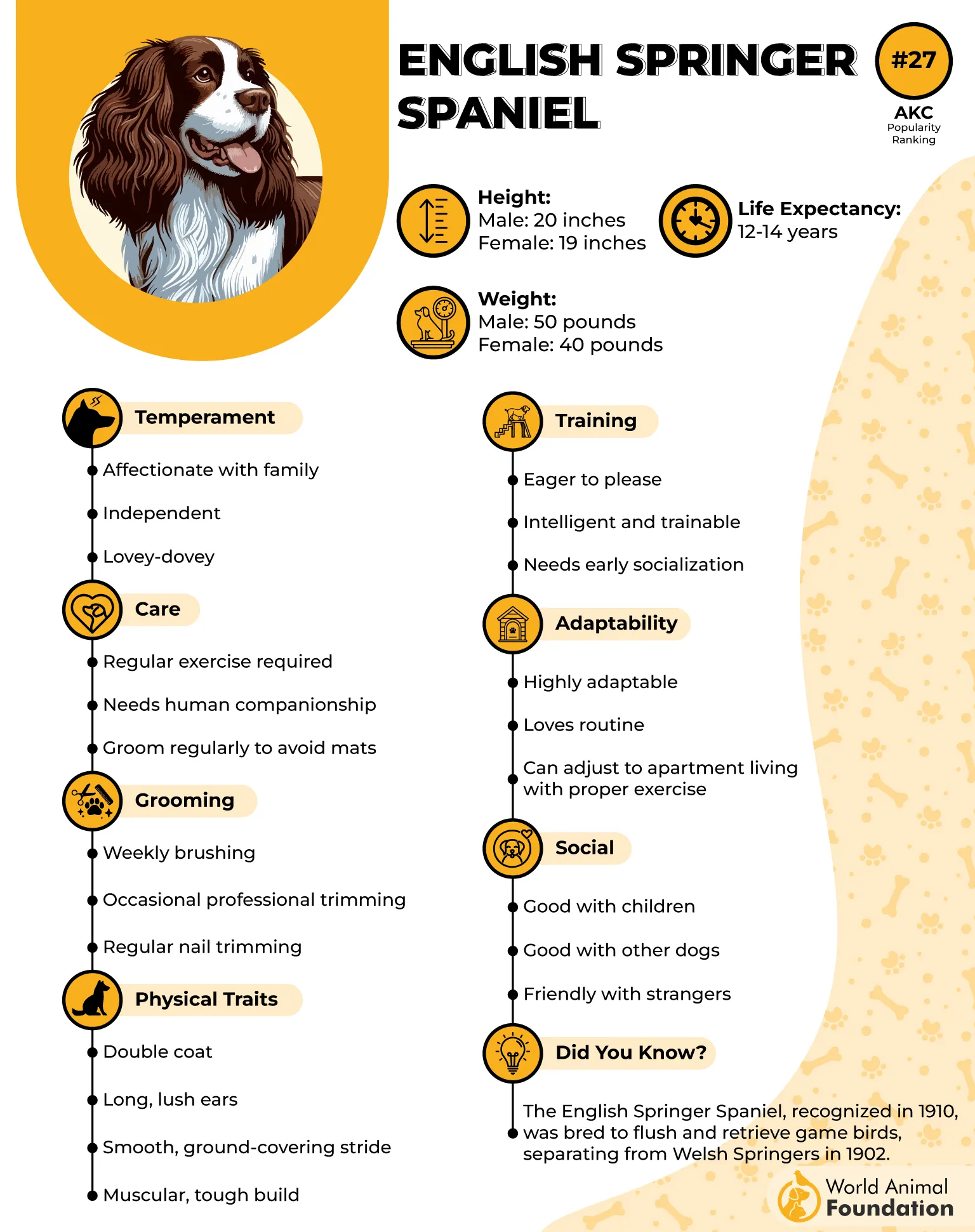
With roots going back to land spaniels of 14th-century Spain, the Springer is one of the oldest bird dog species. Their strong scenting ability, smooth stride, and muscular build allow them to cover dense ground with ease. They have a protective double coat and a naturally soft mouth, allowing them to retrieve without damaging the game.
Springers are known for their sweet and eager-to-please nature. They are highly trainable, crave companionship, and don’t do well when left alone. Their nickname as a “Velcro” dog is well earned—they stick close to their people.
10. Brittany Spaniel
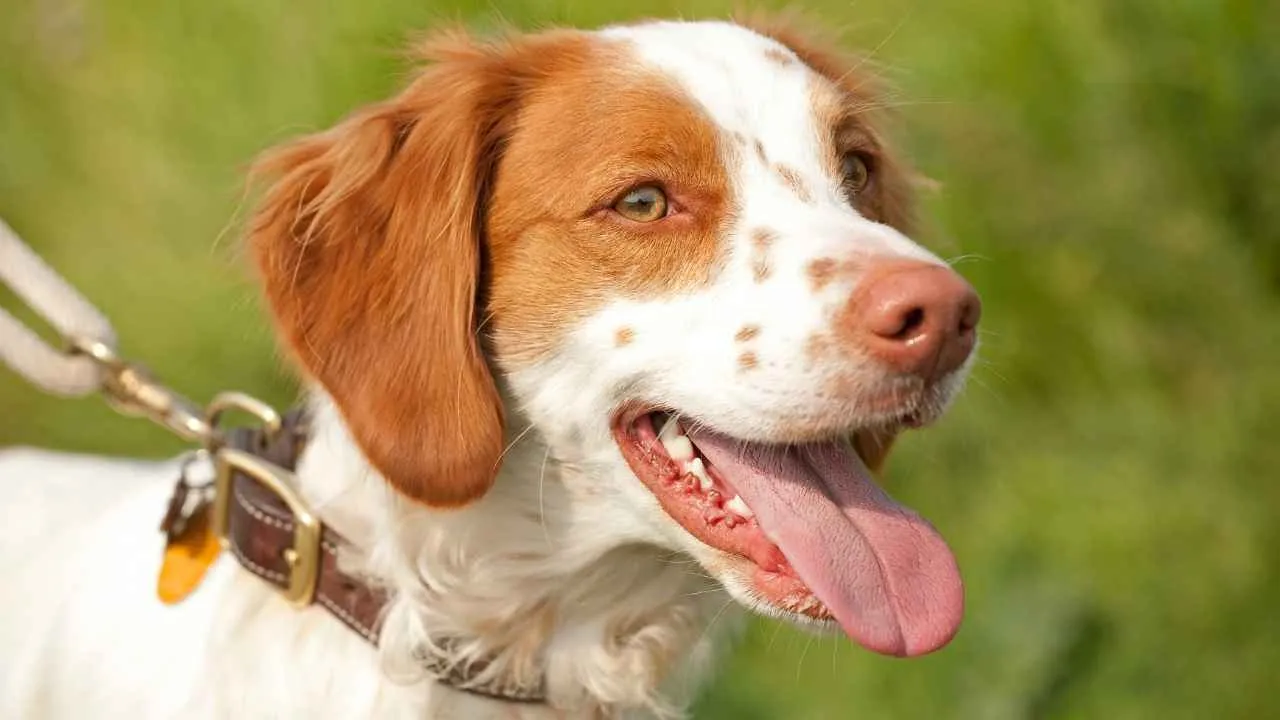
Type: Pointer & Flusher
The Brittany Spaniel, often just called the Brittany, is a nimble and energetic bird dog that originated in Europe, specifically in the Brittany region of France. It was developed as a versatile hunting companion, capable of both pointing and flushing game birds, and is especially well-suited for upland hunting.
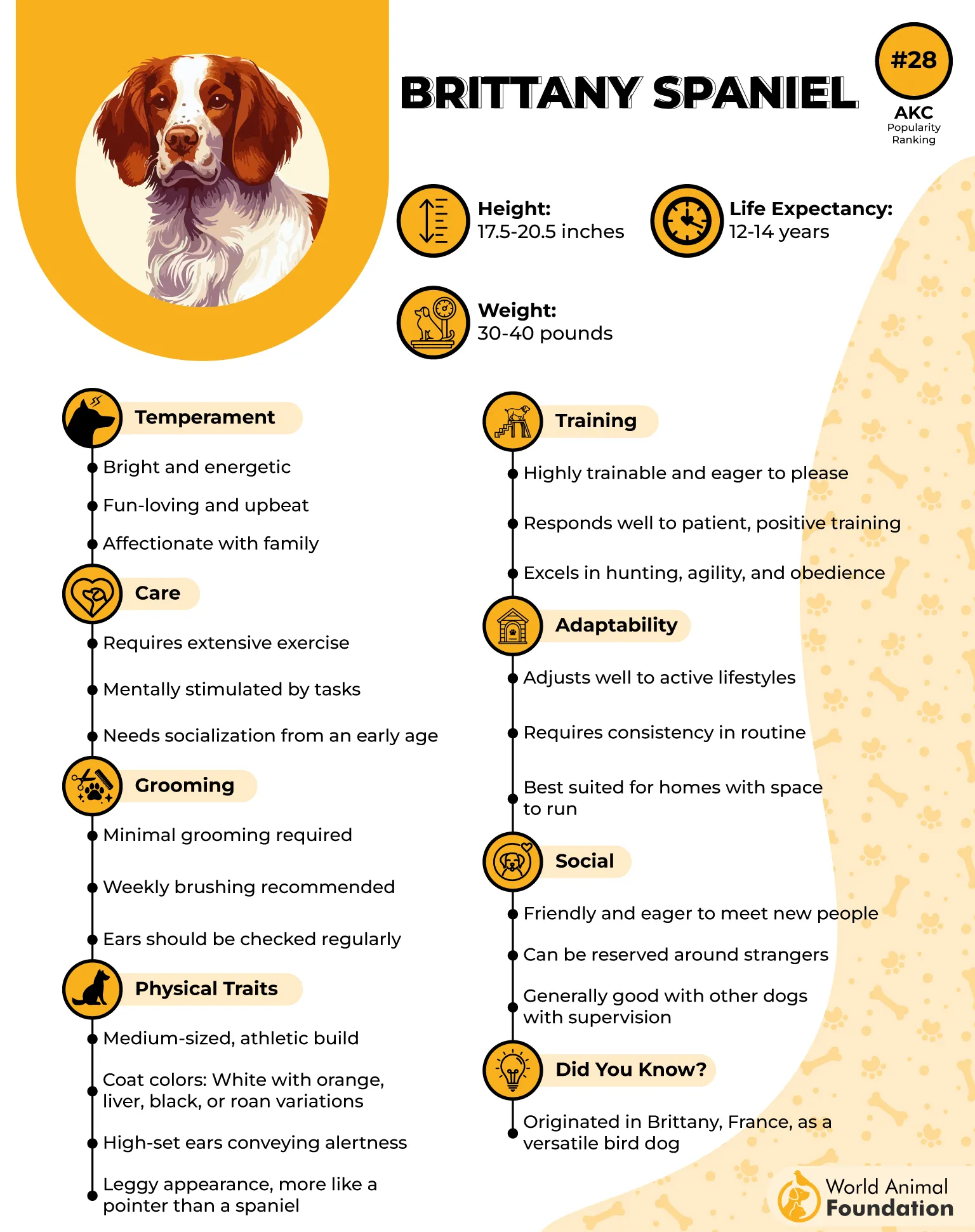
Brittanys are compact and athletic, built for stamina and speed. They typically weigh between 30 and 40 pounds, making them light enough to move swiftly through dense cover yet strong enough to retrieve with ease.
Their high energy and keen nose make them excellent partners for raptor-based falconry, particularly with a red-tailed hawk, as they work well in coordination and remain alert under pressure.
Their feathered wing-like ears and expressive eyes give them a distinctive look, while their short, easy-to-care-for coats make them practical in the field. Brittanys are sensitive to training and respond well to positive methods, often working without the need for harsh correction or tight collars.
Conclusion
The partnership between hunting dogs and birds of prey has deep roots, dating back to Central Asia and the Middle Ages, when humans first began using eagles and falcons alongside loyal dogs to track and catch game. That legacy continues today with breeds recognized by the AKC and trusted by modern falconers for their instincts, obedience, and stamina.
While the breeds listed here are among the most compatible with falconry, there are other breeds as well that can thrive in this unique sport with proper training and dedication. Whether you’re in the field with a hawk or simply enjoying the outdoors with a devoted companion, choosing the right dog ensures a working relationship that honors centuries of tradition.


